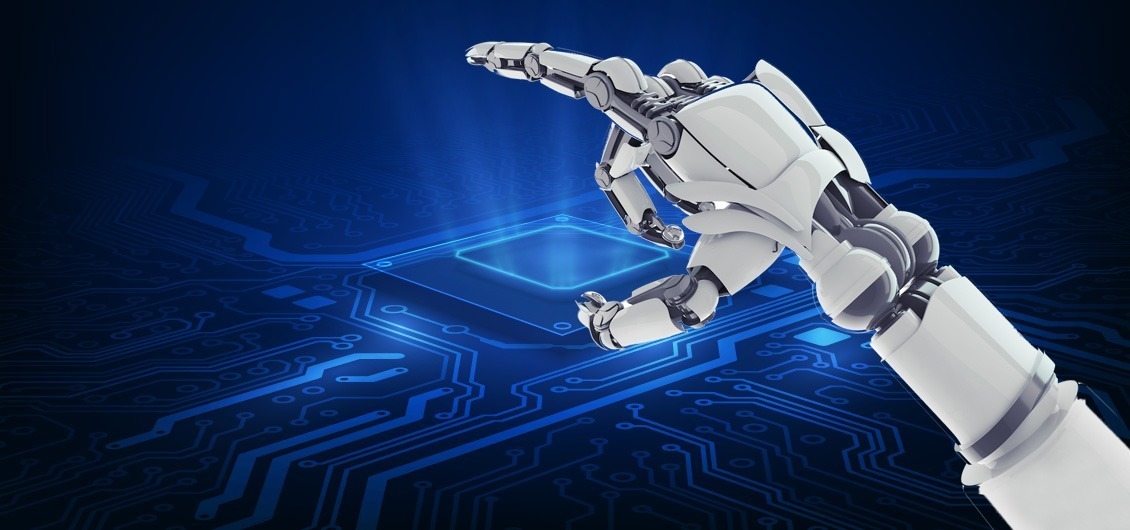The way humans work together with robots is increasingly more important in this era of automation and robotization. The development of industrial cobots (collaborative robots) will impact whole industries. Within the spectrum of smart technology, it is evident that everything from cars and computers to heavy machinery is becoming more intelligent daily. With the help of new artificial intelligence algorithms, the technology around us is continually adjusting to our needs and behaviors in the best way possible. As a result, technology assistance is also advancing. Industrial cobots are designed to collaborate with humans in an intelligent, safe manner. This includes instances where a human guides the robots, monitors the process, and may even learn from the robot. Upon first glance, cobots might seem quite similar to traditional robots; however, their applications vary greatly. Cobots are an integrated part of human labor instead of replacing it entirely.
While cobots are finding a niche in several different sectors, they are commonly found in industrial manufacturing and medicine. Originating from a need to increase industrial productivity, cobots were introduced. Where a traditional, autonomous industrial robot with swinging metal arms, moving parts, and numerous other hazards can threaten the safety of humans nearby, industrial cobots have built-in safety features that ensure their actions and movements are modulated. Additionally, cobots are much cheaper and easier to set up than a traditional automated system, making them a viable option for small and mid-sized businesses looking to automate part of their process.
Thirty years ago, injection molding applications were commonly done using a simple, three-axis, point-to-point, machine-mounted Cartesian robot. Every time the Z (vertical) stroke reached the centerline of the platen, these simple robots rapidly removed parts from the mold and placed them on totes or conveyers. Ten years later, full servo-controlled Cartesian robots gained ground by offering greater precision and control over end-of-arm tools. Fifteen years ago, molders increased their use of six-axis robots. The evolution of cobots has advanced greatly, driven by several technical and business activities that continue today.
- Improved surface finish. Due to high customer standards, a need for greater precision handling from the mold to the final package means improvements for surface finishes.
- Post-mold processes. Though customers require molders to deliver more complete parts or assemblies, molders are happy to oblige. Degating, trimming, polishing, decorating, and assembling add value to the parts, making wrapping and packaging common tasks for automation.
- High mix/low volume. Due to customization, small lot sizes and on-demand production reduce inventory and drive short runs. This makes setup even more demanding.
- Shorter product life cycles. A constant change in manufacturing processes is needed to match the pace of product updates and new introductions.
For the last ten years, plastics processors are adopting a new level of automation, called collaborative robots, or “cobots.” Generally using articulated-arm technology, cobots offer safety, user-programmability, and mobility to that of standard six-axis robots. The success of six-axis robots is due to their flexibility and overall work envelope. Additional degrees of freedom means more choices in all phases of the material handling, assembly, and other applications, translating into real advantages.
- Reduced tooling costs. Six-axis articulated robots simplify tooling and gripper costs along with complexity.
- Flexibility to carry out pre-and-post-mold processes. With the ability to place inserts into the mold and moving parts throughout the post-mold processes, complex motions and demanding angles or positions are now an option.
- Flexibility in loading precision inserts. This is made possible by the positioning flexibility and repeatability of six-axis robots.
- Simplified part extraction. While complex parts are difficult to remove without ejectors, the dexterity of six-axis robots simplifies this process, allowing parts to be pulled gently from the mold.
- Ability to avoid obstacles. Six-axis robots offer the greatest flexibility to navigate around tiebars, slides, hoses, and clamps that often interfere with part motions.
- Reduced maintenance. Because they are sealed, six-axis robots come with reduced maintenance, which means increased uptime.
- Flexible mounting options. Though the typical installation is floor or pedestal mounting, many six-axis robots can be mounted in various orientations for ideal layout, reach, and cycle time.
- Lower overhead clearance. Unlike Cartesian robots that have vertical limitations, mounting a six-axis robot over the injection machine is possible even in very low-ceiling facilities.
- Ease of machine access. Because most six-axis robots are mounted overhead or on the machine, molds can be changed, and maintenance will have easy access when needed.
- Efficient use of floor space. As floorspace is expensive, mounting a six-axis robot provides not only flexibility but also frees up floor space for secondary operations.
Though cobots offer the same advantages as the six-axis benefits listed above, they also provide significant advantages not possible with traditional automation.
- More floor space. Cobots do not often require the heavy, expensive, and space-utilizing safety fencing and access doors that traditional automation requires.
- Engaged operators: Cobots are designed to operate safely in close proximity to operators while maximizing production. This increases interaction between skilled operators and cobots.
- Portable: Because they are lightweight and easy to set up, cobots are often treated as manufacturing tools that move from machine to machine as production requires.
- Easy programming. With no special software to learn, cobots deliver extremely intuitive programming. This makes for a straightforward setup, programming, and interfacing experience.
- Fast ROI. The advantages of simplified programming and setup, along with reduced or little need for guarding, add up to automation at about half the cost of traditional robots. This means fast ROI, typically within six to nine months.
PFA Can Help with your Robotic Automation Project
Humans remain the most flexible and intelligent resource on the production floor. Cobots can not only crank up production levels, but they also add value to existing jobs by allowing humans to once again find passion and gather knowledge about what they produce. Cobots are improving work conditions and empowering humans to have more fulfilling jobs in the manufacturing industry. Let PFA Incorporated help you transition to collaborative automation and get the most out of it by contacting us today or calling 262-250-4410.
Photo taken from pngimg.com


